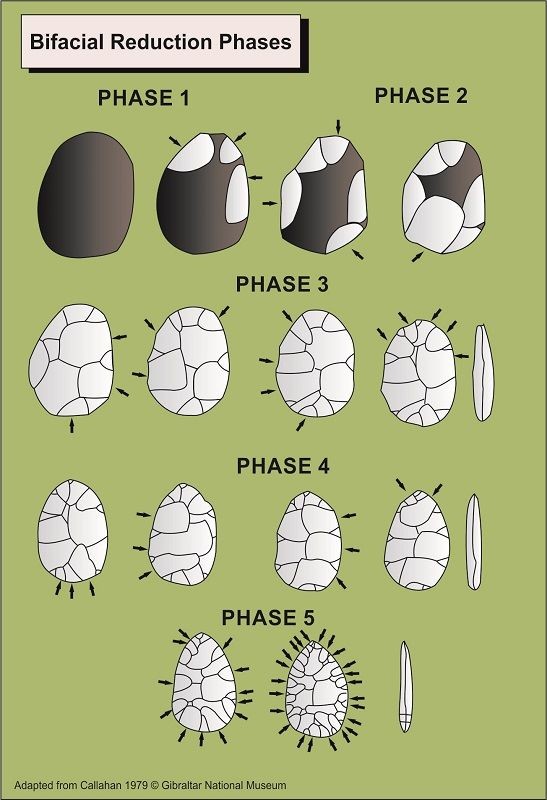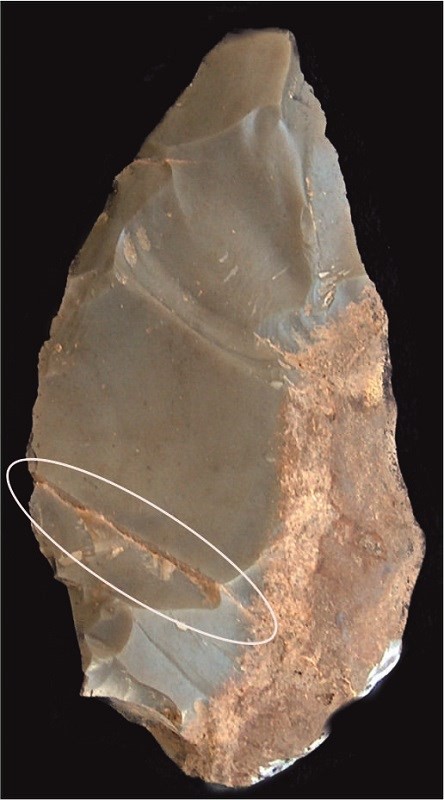Solutrean preform
Solutrean preform
The usual thing in archaeology is to find objects that have been abandoned after being used and once they have lost their functionality due to wear or damage. However, sometimes the opposite happens and we find objects that were not fully completed. Usually this indicates that we are at, or in close proximity to, the production location.
This also applies to the Palaeolithic, where locations with unfinished tools discarded due to a defect or failure in the process, indicates that this type of tool was likely being produced at these sites.
This is the case of this preform of a Solutrean (approx. 20,000 years BCE) bifacial point from Gorham’s Cave, which should have ended up becoming a slender arrow or spearhead, was left unfinished, having the appearance of a small hand axe.
These kinds of artefacts are very interesting, since they provide a lot of information about the way they were produced and the different techniques necessary. Our piece is in an intermediate phase of reduction of the raw material, even with part of the crust of the flint nodule. Our ancestor from the Upper Palaeolithic, likely noticed a small natural crack in the stone and they would have known at that time that their work was not going to end in the way they had planned, since the point would fracture before being complete, and therefore discarded the piece. The final stages of production were therefore never achieved, where normally the finishing touches to the point would have been applied with the use of a soft hammer and by applying the pressure flaking technique. Finally, in some cases their shape is altered by turning it into a barbed or tanged point.

Usual process carried out during the Upper Palaeolithic to create a bifacial arrow or spearhead.

Solutrean preform.

Solutrean preform showing a small natural crack in the stone.
Published: April 21, 2020
Other similar VM - Archaeology
18-20 Bomb House Lane
PO Box 939,
Gibraltar
